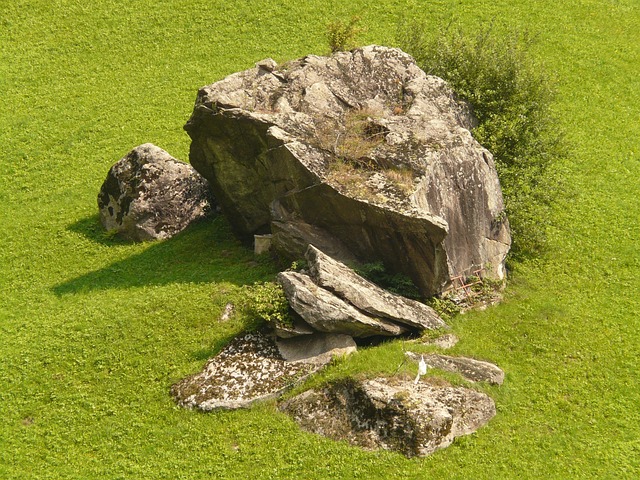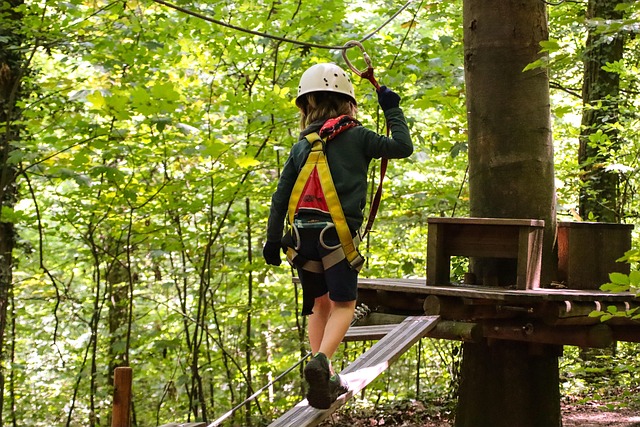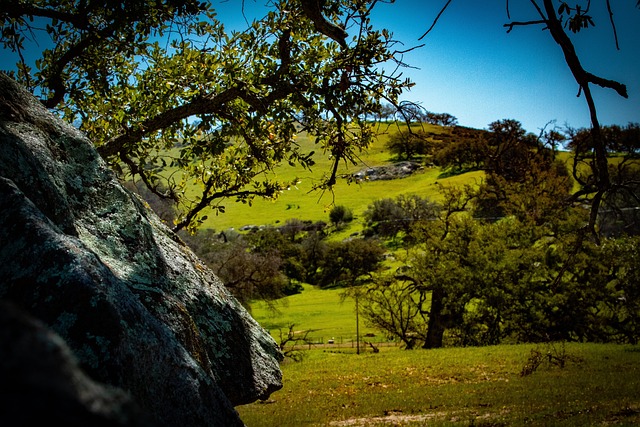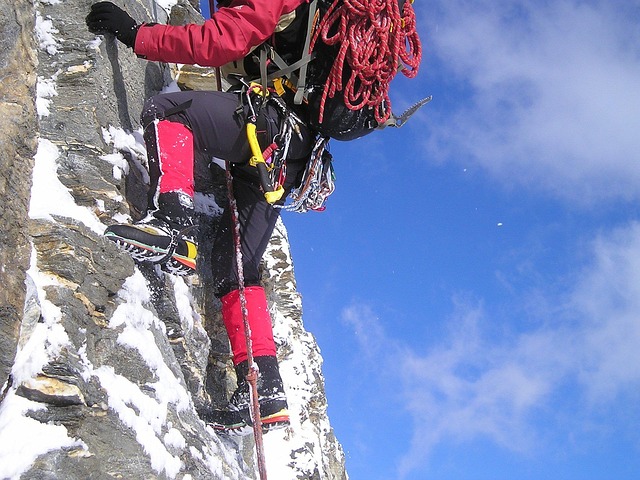Climbing Gyms & Workshops Near Eugene: Elevate Your Game

Eugene, Oregon boasts a vibrant climbing scene with diverse indoor climbing gyms catering to all ski…….
We are At Your Service
Nestled in the picturesque Pacific Northwest, Eugene, Oregon, boasts a vibrant outdoor culture, and at its heart lies a dynamic activity that has captured the adrenaline-seeking hearts of many—rock climbing. This article delves into the thriving rock climbing scene surrounding Eugene, exploring its unique offerings, global impact, and the multifaceted aspects that contribute to its popularity. From breathtaking natural formations to cutting-edge indoor facilities, Eugene presents a diverse range of climbing experiences catering to both seasoned athletes and curious beginners. By examining various facets, we aim to provide an unparalleled guide to understanding and appreciating this captivating sport in its purest form.
Definition: Rock climbing, in its essence, is a challenging outdoor activity that involves ascending natural or artificial rock formations using one’s physical strength, agility, and problem-solving skills. It encompasses various styles, including bouldering (short, intense climbs without ropes), traditional climbing (using equipment to protect against falls), and sport climbing (focused on specific routes with pre-placed bolts).
Historical Context: Rock climbing near Eugene has a rich history dating back to the late 20th century when the region’s rugged landscapes began attracting adventurous climbers. The early days saw climbers exploring remote crags and establishing new routes, laying the foundation for what would become a thriving climbing community. Over time, this passion transformed into a structured sport, with local clubs, competitions, and dedicated facilities emerging to support the growing interest.
Significance: Eugene’s natural environment provides an unparalleled backdrop for rock climbing, offering a diverse range of geological features. From towering volcanoes to dramatic river canyons, these landscapes present unique climbing challenges, fostering a deep connection between climbers and nature. Furthermore, the development of indoor climbing gyms has made this sport accessible year-round, catering to various skill levels and weather conditions.
The impact of rock climbing near Eugene Oregon extends far beyond its local boundaries, influencing global trends and fostering a vibrant international community.
Global Reach: Eugene’s climbing scene has gained recognition internationally, attracting climbers from around the world. This influx has led to cultural exchanges, where seasoned athletes share techniques and inspire local enthusiasts. Many visitors are drawn to the area’s unique climbing destinations, contributing to its growing reputation as a premier climbing destination.
Trends in Climbing Styles: Over time, rock climbing has evolved, with new styles and techniques emerging. Bouldering, for instance, has seen a massive surge in popularity globally due to its accessibility and intense mental focus. Sport climbing, with its emphasis on route efficiency and protection placement, continues to grow, especially in areas like Eugene where well-protected routes are abundant.
Sustainability Focus: One of the notable trends is the increasing emphasis on sustainable climbing practices. Internationally, there’s a push for responsible climbing, including minimizing impact on natural sites, proper waste management, and conservation efforts. Local initiatives in Eugene have followed suit, promoting eco-friendly climbing ethics among both residents and visitors.
The rock climbing economy near Eugene Oregon is a significant contributor to the region’s financial landscape, creating employment opportunities and fostering local business growth.
Market Dynamics: The climbing industry encompasses various sectors, including outdoor gear retailers, adventure tour operators, climbing schools, and specialized accommodations. According to a 2021 study, the outdoor recreation industry in Oregon generated over $13 billion in economic activity, with rock climbing contributing substantially to this figure. Eugene’s climbing market is characterized by a mix of established businesses and new startups, each catering to specific niches.
Investment Patterns: The area has witnessed increased investment in climbing infrastructure, with private investors and local governments collaborating on projects. For instance, the construction of the city’s first indoor climbing facility, “Climber’s Edge,” was met with enthusiasm, attracting climbers from across the region. Such investments not only enhance the climbing experience but also stimulate local economic growth through increased tourism and job creation.
Tourism Boost: Rock climbing is a significant draw for tourists, with many visitors specifically planning trips around climbing opportunities. The Oregon Tourism Board estimates that outdoor recreation, including rock climbing, accounts for over 25% of all tourist spending in the state. This influx benefits local businesses, from accommodation providers to restaurants and retail shops.
Technology has played a pivotal role in transforming rock climbing near Eugene Oregon, enhancing safety, accessibility, and overall enjoyment.
Indoor Climbing Gyms: The advent of indoor climbing facilities has been a game-changer. These gyms offer year-round access to climbing walls with various angles and difficulties, catering to all skill levels. Advanced technologies like automated belay systems and digital route setting allow for dynamic and customizable climbing experiences. For instance, “The Spot” in Eugene, an iconic indoor climbing gym, employs innovative wall designs inspired by natural rock formations, providing a unique training environment.
Climbing Apps and Online Platforms: Digital tools have revolutionized how climbers connect, share knowledge, and discover new routes. Climbing apps offer detailed maps, route descriptions, and real-time updates on conditions. Online forums and social media groups facilitate the exchange of information, fostering a global climbing community. Local Eugene climbers often contribute to these platforms, sharing insights about hidden gems and local challenges.
Advanced Safety Equipment: Technological advancements in safety gear have significantly improved climber security. High-tech ropes, advanced harnesses, and sophisticated carabiners offer enhanced durability and reliability. Moreover, digital fall protection systems, such as automatic belay devices, allow for safer training and encourage more people to try climbing without compromising safety.
To preserve the natural environment and promote safe climbing, various policies and regulations are in place near Eugene Oregon.
Land Management: The U.S. Forest Service and local land managers play a crucial role in governing climbing activities on public lands. They establish guidelines for route access, environmental protection, and responsible land use. For instance, the Willamette National Forest has specific rules regarding trail closure, waste disposal, and impact mitigation during climbing events.
Climbing Permits: Some popular climbing areas near Eugene require permits, especially for technical routes or areas with high environmental sensitivity. These permits help track climber activity, manage crowds, and ensure compliance with land management regulations. The South Fork Cascadia Wilderness, known for its challenging climbs, operates on a permit system to protect its ecologically fragile environment.
Safety Regulations: Local climbing facilities, both indoor and outdoor, adhere to strict safety standards. These include regular equipment inspections, certified instructors, and emergency response protocols. The Oregon Climber’s Alliance (OCA) provides guidelines and educates climbers about responsible practices, including proper waste disposal, leave-no-trace principles, and respecting local regulations.
Despite its thriving reputation, rock climbing near Eugene Oregon faces certain challenges that require strategic solutions.
Access and Inclusion: One of the primary concerns is ensuring equal access to climbing for all segments of the community. While indoor gyms offer opportunities, some individuals may face financial barriers or lack exposure to the sport. Initiatives to provide discounted memberships, community outreach programs, and scholarship schemes can promote inclusivity.
Environmental Impact: With growing popularity comes increased pressure on natural climbing areas. Erosion, trail degradation, and habitat disruption are potential issues. Implementing sustainable practices, such as designated climbing routes, controlled access, and educational campaigns, can mitigate these challenges. The OCA actively works with land managers to develop and promote responsible climbing ethics.
Competition for Space: As climbing gains popularity, finding suitable outdoor climbing areas becomes more competitive. Local climbers often advocate for the preservation of less-trafficked routes and the development of new crags to distribute climber activity. Collaboration between climbers, land managers, and local governments is essential in finding balanced solutions.
“Climber’s Edge,” located in the heart of Eugene, stands as a testament to the growing popularity of rock climbing in the region. This state-of-the-art facility offers a diverse range of climbing walls, from beginner-friendly slopes to overhangs challenging even the most seasoned climbers. Through community engagement and innovative programming, “Climber’s Edge” has become a hub for local climbers and a draw for visitors.
Key Success Factors:
Smith Rock State Park, located east of Eugene, is renowned for its breathtaking climbing formations and pristine natural setting. The park has successfully implemented sustainable climbing practices, ensuring the preservation of this unique landscape for future generations.
Sustainable Initiatives:
The future of rock climbing near Eugene Oregon is filled with promising opportunities and strategic growth areas.
Outdoor Adventure Tourism: With its unparalleled natural beauty and diverse climbing offerings, Eugene is well-positioned to become a premier outdoor adventure destination. Investing in eco-friendly tourism infrastructure and promoting sustainable practices will attract conscious travelers seeking authentic experiences.
Youth Engagement: Focusing on youth climbing programs can help cultivate the next generation of climbers and ensure the sport’s long-term sustainability. Schools, community centers, and local climbing gyms can collaborate to introduce climbing as a fun and accessible activity for younger audiences.
Digital Integration: Continuing to embrace technological advancements will enhance the overall climbing experience. Virtual reality training, augmented reality route finding, and interactive learning platforms can attract tech-savvy climbers and provide new avenues for skill development.
International Collaboration: Building upon Eugene’s global reputation, fostering partnerships with international climbing communities can lead to cultural exchanges, joint events, and knowledge sharing. This collaboration can further elevate the city’s climbing scene and attract top athletes worldwide.
Rock climbing near Eugene Oregon has evolved from a niche activity into a vibrant community-driven sport that captivates locals and visitors alike. From breathtaking natural formations to cutting-edge indoor facilities, the region offers a diverse range of climbing experiences. The global impact of this sport is evident in its growing popularity, cultural exchange, and contributions to outdoor recreation economies worldwide.
As Eugene continues to embrace sustainable practices, technological innovations, and strategic growth initiatives, the future looks promising for rock climbing enthusiasts. By addressing challenges through collaboration and community engagement, the climbing scene can thrive while preserving the natural beauty that attracts climbers from around the globe. This comprehensive exploration highlights the multifaceted allure of rock climbing near Eugene, solidifying its place as a premier destination on the international climbing map.
Q: What makes rock climbing in and around Eugene Oregon unique?
A: Eugene’s climbing scene offers a perfect blend of breathtaking natural landscapes and modern indoor facilities. The region boasts diverse climbing styles, from dramatic volcanic cliffs to lush forest crags, providing a unique and varied experience for climbers of all levels.
Q: Is rock climbing near Eugene suitable for beginners?
A: Absolutely! There are numerous indoor gyms and outdoor areas designed with beginners in mind. These locations offer beginner-friendly routes, educational programs, and certified instructors to ensure a safe and enjoyable introduction to the sport.
Q: Are there any safety concerns for climbers in this area?
A: As with any outdoor activity, safety is a priority. Proper training, using appropriate gear, and adhering to local regulations are essential. The climbing community near Eugene actively promotes responsible practices, and land managers implement safety measures to ensure a secure climbing environment.
Q: How can I contribute to the sustainability of climbing in this area?
A: You can make a positive impact by adopting sustainable practices yourself. Follow leave-no-trace principles, respect local regulations, properly dispose of waste, and support conservation efforts. Additionally, participating in community cleanups and advocating for responsible land management can contribute to the long-term preservation of climbing areas.
Q: Are there any notable climbing events or festivals held in Eugene?
A: Indeed! Eugene hosts several annual events, such as the Oregon Climbing Classic, a major competition attracting climbers from around North America, and the Cascadia Cup, a friendly international event showcasing the region’s talent. These festivals celebrate the sport’s spirit and bring the community together.

Eugene, Oregon boasts a vibrant climbing scene with diverse indoor climbing gyms catering to all ski…….

Rock climbing in Eugene, Lane County, thrives with diverse natural terrain offering spots for all le…….

Discover top-rated bouldering spots near Eugene for an exciting family outing against stunning natur…….

Lane County near Eugene, Oregon, offers diverse climbing opportunities from peaks to crags within cl…….

Before climbing in Lane County, invest in quality gear and learn basic techniques for safety and enj…….

Discover thrilling bouldering opportunities near Eugene, Oregon, featuring diverse outdoor routes an…….

Rock climbing, or bouldering near Eugene, offers a thrilling family adventure accessible to all ages…….

Rock climbing gyms in Eugene offer year-round indoor adventures for all levels, from beginners to ex…….

Families in Lane County can enjoy active outdoor fun through bouldering near Eugene, offering divers…….